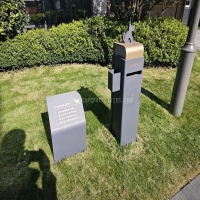Welcome to the website for landscape facilities products and knowledge.
What is the process for scaling bin deployment based on population growth?
As urban areas expand due to population growth, efficient waste management becomes critical. Scaling bin deployment involves a systematic approach to ensure cleanliness and sustainability. Here’s the step-by-step process:
1. Assess Current Demand: Analyze existing bin usage and waste generation rates per capita. Identify high-traffic areas and underserved locations.
2. Forecast Future Needs: Use population growth projections to estimate future waste volumes. Consider factors like residential density, commercial activity, and tourism.
3. Optimize Bin Placement: Strategically position bins in public spaces, transit hubs, and residential zones. Prioritize accessibility and convenience to encourage proper disposal.
4. Choose Appropriate Bin Types: Select bins based on capacity, durability, and segregation needs (e.g., recycling, organic, and general waste).
5. Implement Smart Solutions: Integrate sensor-based bins or IoT-enabled systems to monitor fill levels and optimize collection schedules.
6. Engage the Community: Educate residents on proper waste disposal and recycling practices to maximize efficiency.
7. Monitor and Adapt: Regularly review bin usage data and adjust deployment as needed to align with changing population dynamics.
By following this process, cities can ensure scalable, sustainable waste management systems that keep pace with growth.
Related search:

Recommendation
Outdoor cat and dog feces trash can; Community pet trash can; Metal multi-color design